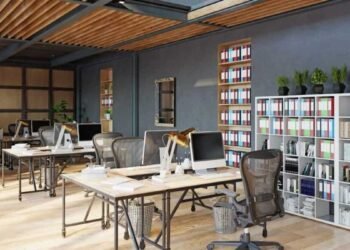The design of commercial workspaces has evolved significantly in recent years, driven by advancements in technology, a focus on employee well-being, and changing work dynamics. As businesses embrace more flexible, collaborative, and productive environments, the need for innovative design approaches has become more critical than ever. Here, we explore some of the most exciting and effective design trends shaping commercial spaces.
1. Flexible Layouts and Modular Furniture
One of the most significant shifts in commercial workspace design is the move toward flexibility. With the rise of hybrid work models and a growing emphasis on collaboration, businesses are increasingly opting for open, adaptable layouts that allow for easy reconfiguration. Modular furniture systems are key to this transformation, offering employees the ability to rearrange desks, chairs, and other elements to create spaces that meet their immediate needs. Innovative commercial fitouts are essential for creating dynamic work environments that enhance both employee productivity and overall business success.
For example, modular seating areas can be adjusted to accommodate group meetings, quiet individual work, or social breaks. This flexibility enhances productivity and encourages a dynamic, fluid work environment that can adapt as business needs change.
2. Biophilic Design
Incorporating elements of nature into the workspace is another innovative approach that is gaining traction. Biophilic design focuses on creating environments that connect people with nature, which has been shown to reduce stress, increase creativity, and improve overall well-being.
To implement biophilic design, many commercial spaces are introducing plants, living green walls, and natural light sources. Additionally, natural materials such as wood and stone are being used in furniture and flooring to create a more organic, calming atmosphere. The integration of outdoor spaces, such as rooftop gardens or courtyards, also supports a connection to nature, providing employees with an opportunity to step outside and recharge.
3. Technology Integration
As technology continues to play a central role in work environments, the design of commercial spaces must also evolve to incorporate the latest tech innovations. Smart office solutions, such as automated lighting, temperature control, and space management systems, are becoming common in modern workspaces. These systems not only improve efficiency but also contribute to sustainability by reducing energy consumption.
Moreover, the integration of video conferencing tools and collaborative technology, such as interactive whiteboards and virtual meeting rooms, is essential in today’s hybrid and remote work environments. These technologies are seamlessly incorporated into the design to ensure that teams can collaborate effectively, regardless of their physical location.
4. Employee-Centric Design
An employee-centric approach to workspace design focuses on creating environments that prioritize the needs and well-being of staff. This involves considering factors such as ergonomics, comfort, and access to amenities. Adjustable standing desks, comfortable seating, and quiet rooms for focused work or relaxation are all essential elements of this approach. Also, the integration of secure storage solutions through a reliable locker supplier UK (or elsewhere) can help keep personal and work items organized, enhancing both efficiency and overall employee satisfaction.
Additionally, wellness spaces, such as meditation rooms, fitness areas, and even on-site childcare, are becoming more common in commercial office designs. These features not only improve employee satisfaction but also contribute to a healthier, more engaged workforce.
5. Sustainability and Eco-Friendly Practices
Sustainability is at the forefront of modern commercial design. Businesses are increasingly adopting eco-friendly practices in both the construction and operation of their workspaces. From using recycled and sustainable materials in furniture and finishes to incorporating energy-efficient lighting and HVAC systems, the goal is to create spaces that have a minimal environmental impact.
Designing for sustainability also means optimizing office spaces for energy efficiency. Natural ventilation, low-flow water fixtures, and solar panels are just a few examples of how businesses are reducing their carbon footprints while maintaining a functional and stylish workspace.
Conclusion
Innovative design approaches in commercial workspaces are not just about aesthetics; they are about creating environments that enhance productivity, well-being, and sustainability. From flexible layouts and biophilic design to the integration of technology and employee-focused spaces, modern office designs are evolving to meet the demands of a changing workforce. By embracing these innovative approaches, businesses can create workspaces that support the success and happiness of their teams while staying ahead of the curve in an increasingly competitive business landscape.












